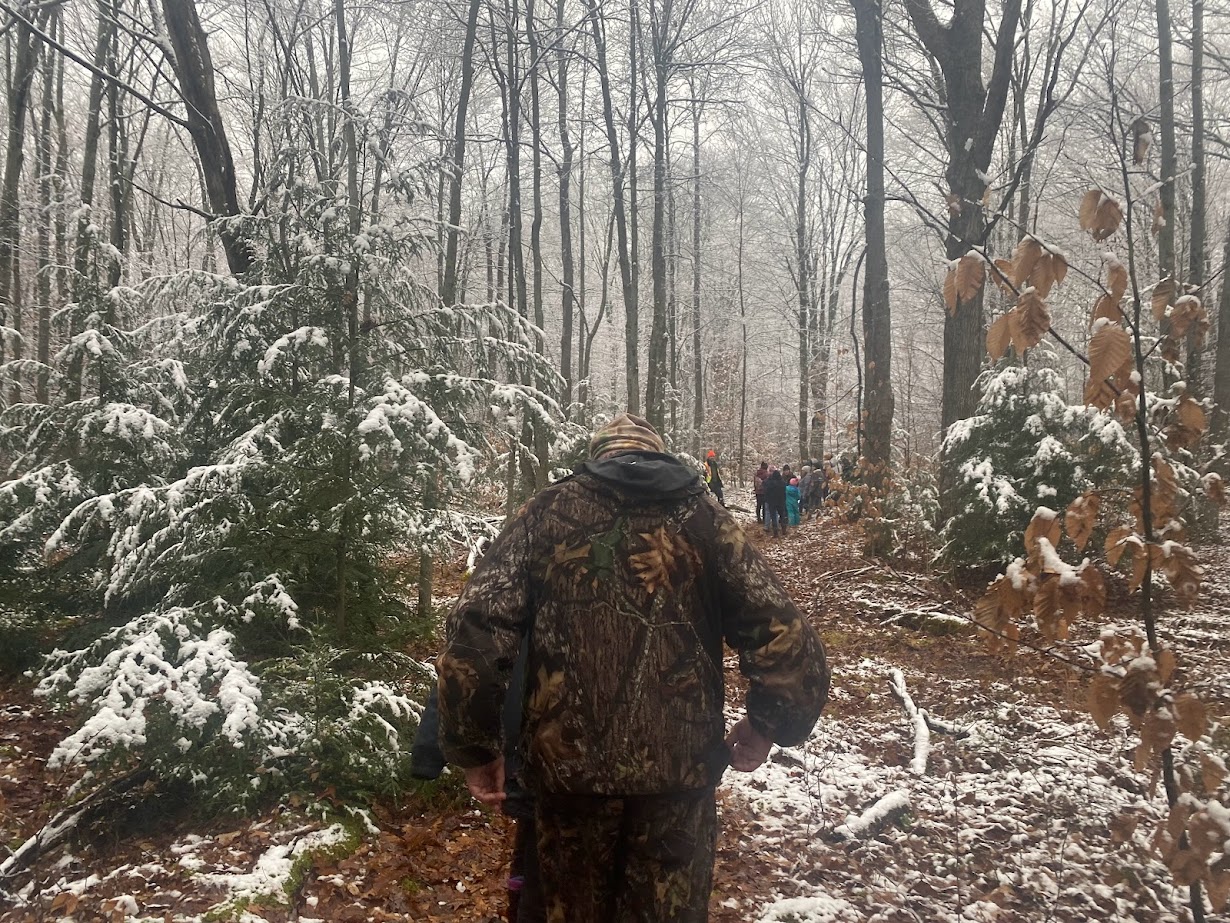A First Day Hike at Parker Dam State Park
Just ten hours after watching the Times Square ball drop celebration on TV and ringing in the new year for 2024, I found myself at Parker Dam State Park to celebrate the start of a fresh year with their annual First Day Hike.
What is a First Day Hike? They’re held on the first day of the new year at lots of Pennsylvania state parks. These free hikes are guided by staff and volunteers from the PA Department of Conservation and Natural Resources (DCNR), and they’re typically anywhere from 1 to 3.5 miles long.
The one at Parker Dam State Park this year was about 1.5 miles long, going from the Log Slide Trail and connecting up with an old gas pipeline path called Stumpfield Trail to head back towards the park office.
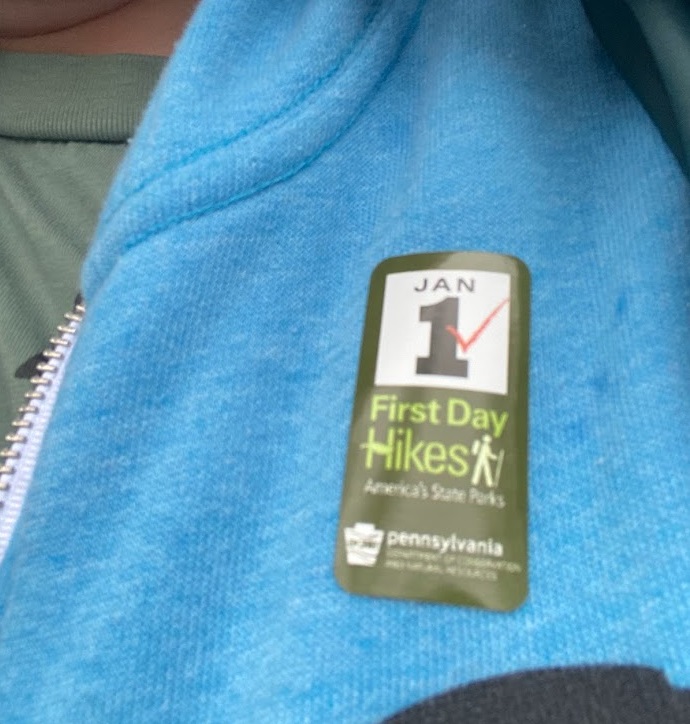
Although I’ve taken a lot of hikes at Parker Dam before, I wasn’t sure what exactly to expect for the guided hike. This was the first time I was partaking in a First Day Hike myself, though I was familiar with the concept. I knew plenty of people who had been to a First Day Hike before and had enjoyed it, so I was eager to participate. I also wrote up a First Day Hike list for the PA Wilds blog, so I felt well prepared with all the information. Still, I wondered how many people would attend and how long it would take.
As I pulled into Parker Dam State Park, I was surprised to see dozens of cars already in the parking lot by the park office. I threw my water bottle into my day bag and hurried over to where people were gathering. There were maybe 50 people of all ages, from older retired folks down to a toddler who would eventually end up in a carrier on his mom’s back. There were a handful of leashed dogs there too, all surprisingly quiet and well-behaved but clearly excited to get started on the hike.
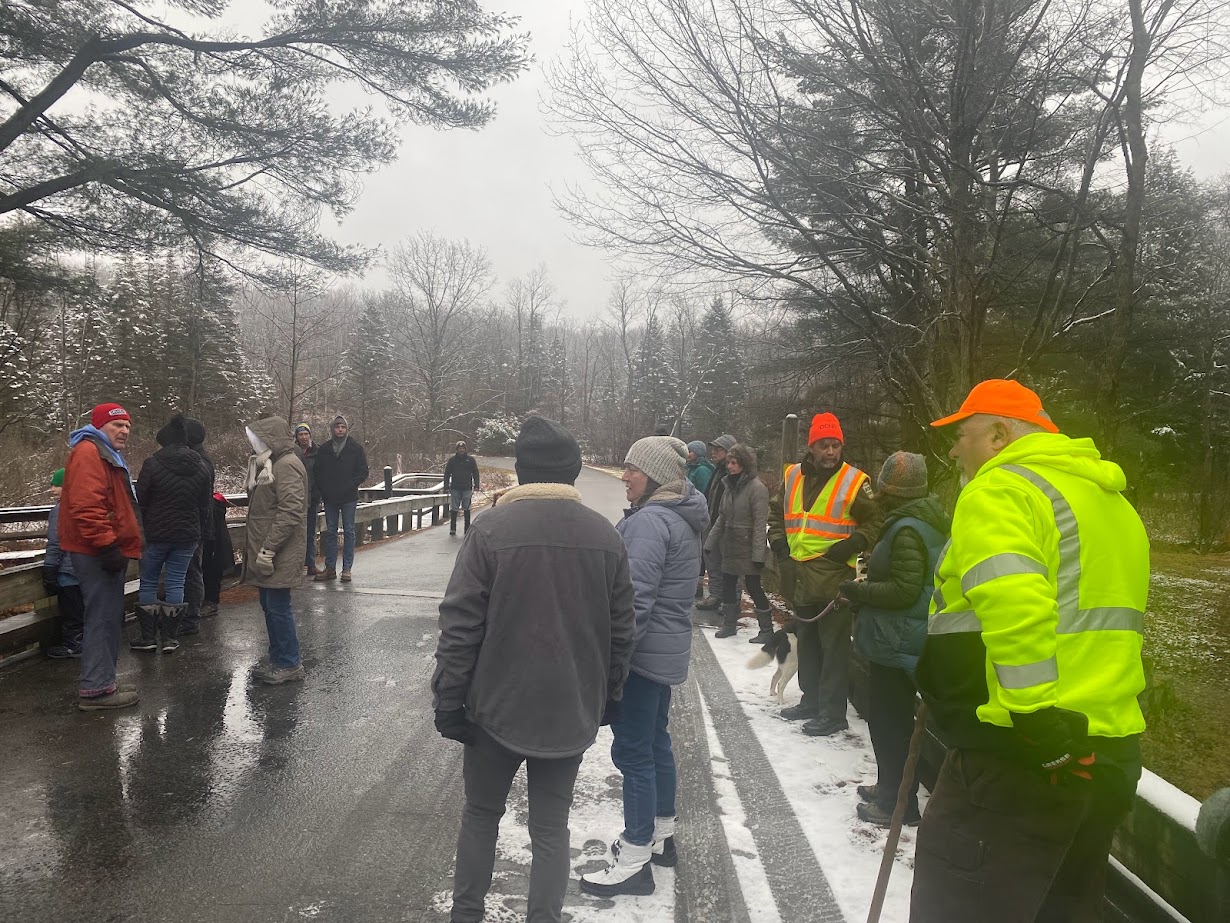
I myself was there alone, as my husband Jeremy had celebrated a little too hard the night before for New Year’s and both of our dogs are better at hiking alone than with a crowd. I was a little worried that it would be awkward to be there alone, but I wasn’t the only one who had come by themselves. And me being the kind of person who isn’t afraid to walk up to strangers and start conversations, I quickly found some newfound friends: Karen and Carl, a couple in their 70s who had traveled from Lewistown, about an hour-and-a-half drive. As our group made its way from the park office to the start of Log Slide Trail, we chatted about other places we had hiked and places that are still on our bucket lists.
Parker Dam State Park Natural Resource Specialist Eric Rensel led the way, stopping at the trailhead to give instructions about what to expect. We would be stopping fairly often, he explained, since it was an interpretive hike and part of the experience would be learning about the history of the area or pointing out interesting views. He handed out First Day Hike stickers, which I felt a little silly taking until I realized that everyone (not just the kids) was taking them and proudly displaying them on their jackets.
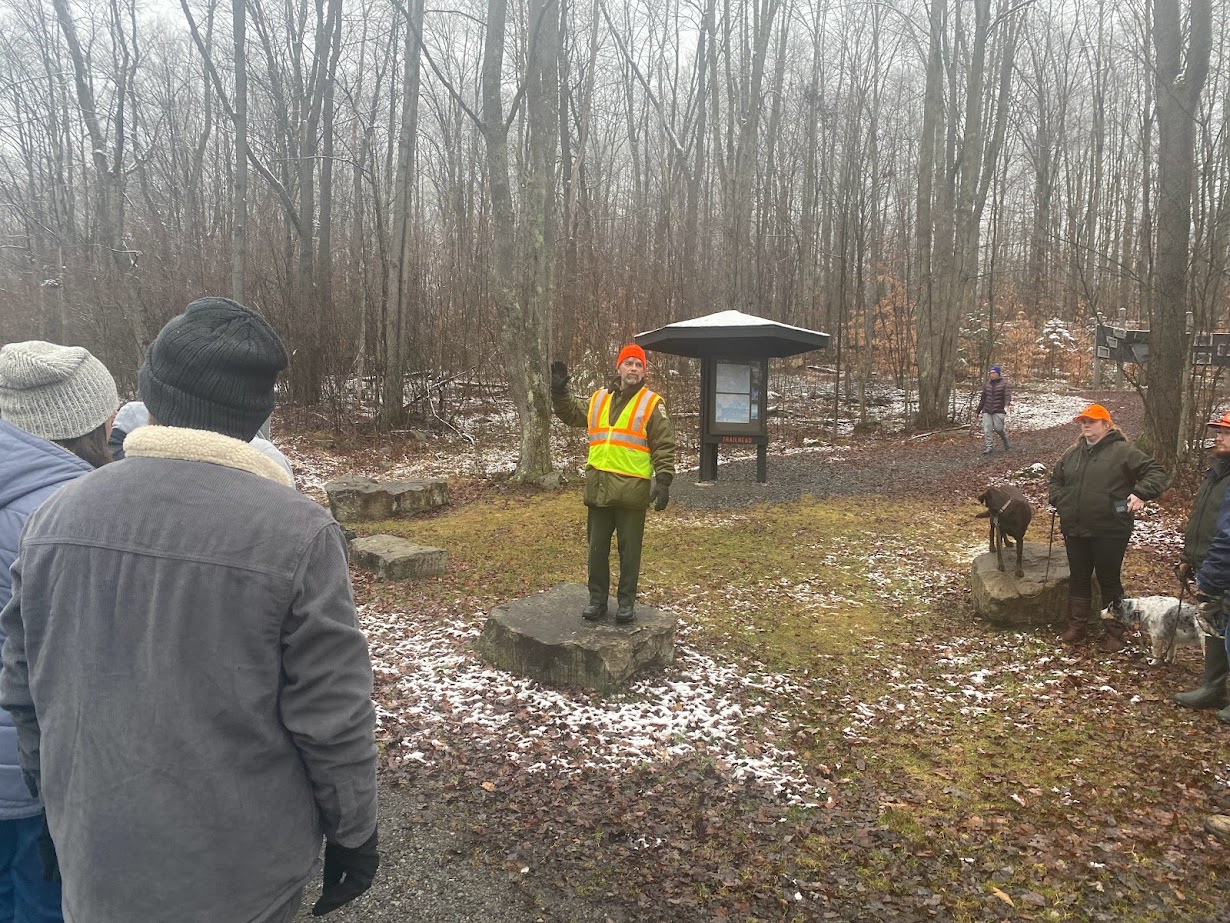
We started the hike at the Log Slide Trail, which is part of the 73-mile Quehanna Trail. Thankfully we weren’t about to do all 73 miles!
A display at the trailhead shows historic lumbering tools and an authentic reproduction of a log slide, which were used in the 1870s to harvest timber. Along the trail, visitors can see the places where the Civilian Conservation Corps workers cut stone in the 1930s to build Parker Dam.
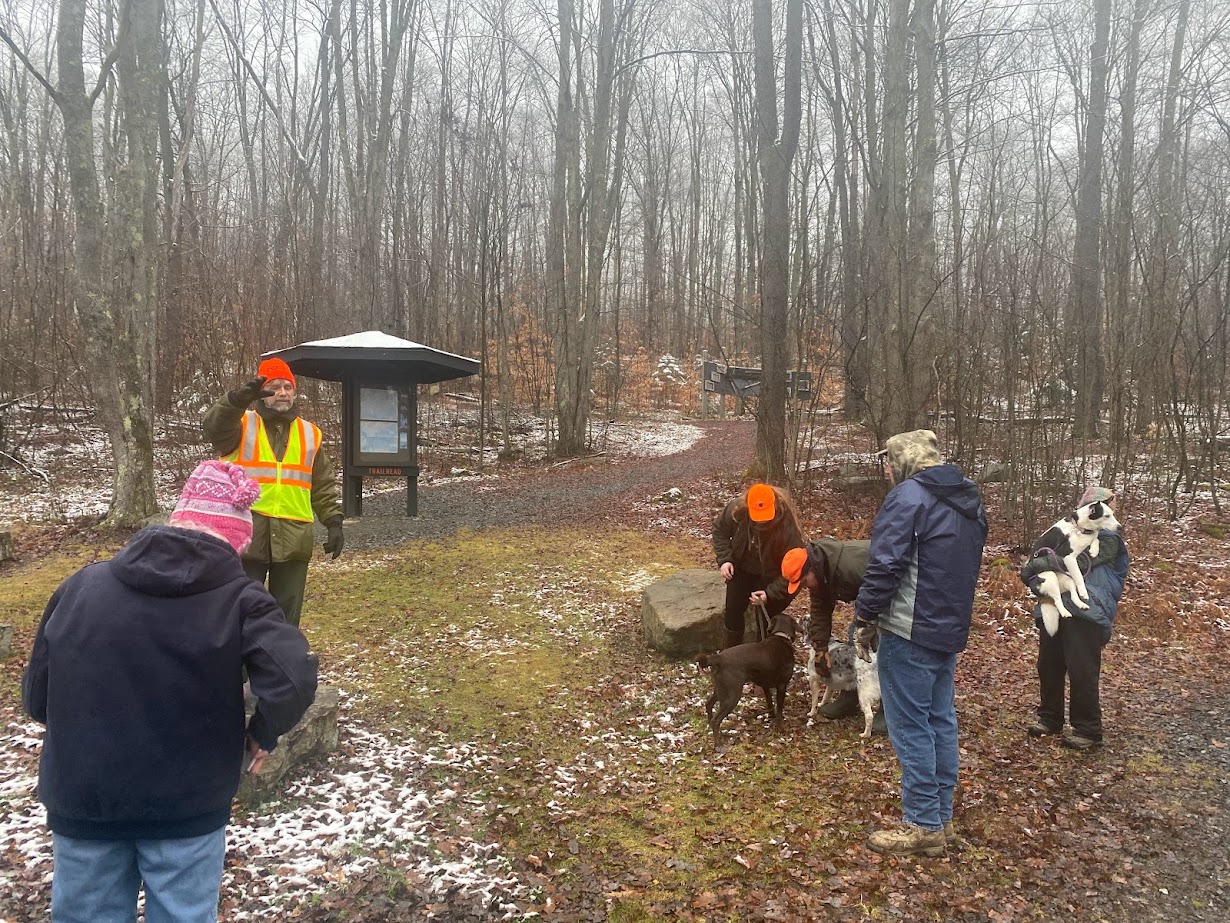
This part of the hike was full of history. Natural Resource Specialist Eric explained how valuable timber was cut in the area in the late 1800s, but it required some ingenuity to haul it away. “Log slides” were built along hillslopes to take advantage of gravity to transport timber to a waterway – in this case, to Parker Dam. A lot of this work happened in the winter when it was easier to slide the logs along the trails and more draft horses were available to haul the lumber.
This part of the trail is mostly flat or a gentle slope, but the rocky landscape can make it tricky. Although there wasn’t a lot of snow on the ground, there were plenty of wet leaves and slippery rock surfaces. Our group snaked along the trail carefully, keeping an eye on where our feet would step next and pointing out slick spots to those behind us in line.
About a quarter-mile into the trail, the Log Slide Trail connects with a gas pipeline trail to its left. Eric stopped the group here, waiting for everyone to catch up. A few of the kids took the chance to lay directly on the ground and play in the mud, dashing their parents’ hopes of their kids not being sopping wet by the end of the hike. The rest of us took a moment to catch our breath while we learned more about where we were situated, which happened to be right on the edge of Parker Dam State Park and Moshannon State Forest land.
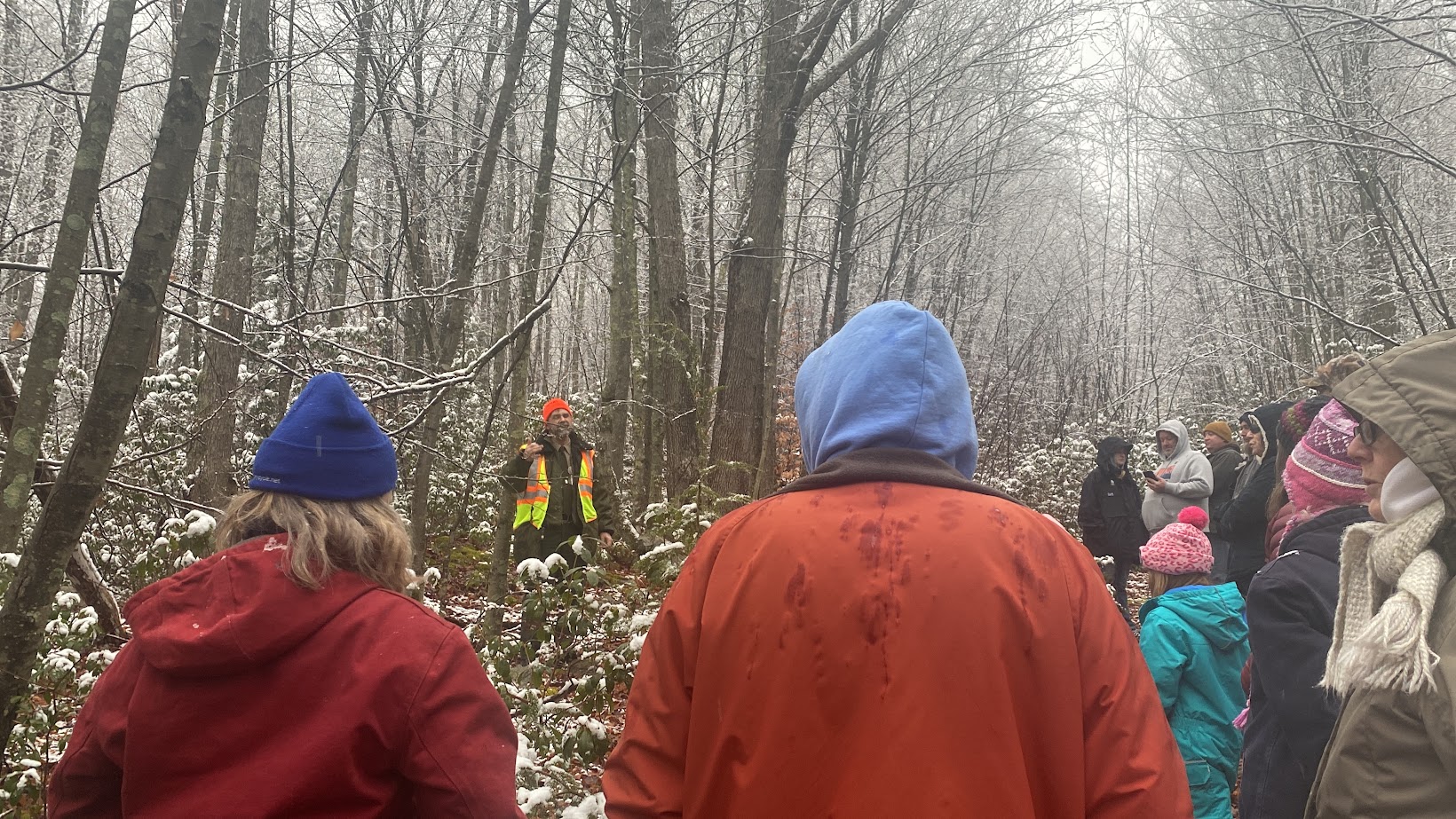
He pointed out that we would turn up onto the Stumpfield Trail, which was aptly named because of all of the stumps we would see. Eric explained that this forest, and much of Pennsylvania as a whole, used to be covered in white pine trees and other softwood trees like hemlock. As America grew and needed lumber to build houses and infrastructure, the timber in the Pennsylvania Wilds was used to literally build the country. However, this meant that almost all of the region was completely logged over, leaving stumps where beautiful 100-foot-tall pines and hemlocks once were.
We headed up a gentle hill, the steepest climb of the whole, mostly flat, hike. This trail was more narrow than the Log Slide Trail, and we quickly learned to hold the springy branches back as we passed through the dense shrubs so that the branches didn’t whack the folks behind us in the face.
At the top of the hill, the trail leveled out again. We stopped by a few small white pine trees. Eric explained that the pines that were once here were much taller, about twice the height of most of even the tallest trees in the forest currently.

Eric showed us a trick to estimating the age of a pine tree, something that I had never heard of before. This doesn’t work for every type of tree, but a white pine is easy to calculate! White pines grow a ring of branches each year, so you can easily count the set of branches starting at the bottom. If you find that you can’t see the whole way to the top, you can also stop part way up and continue counting the additions horizontally using a live branch and counting out towards the end. The particular tree that Eric demonstrated on was about 13 years old, which one of the kids shyly noted was older than he was.
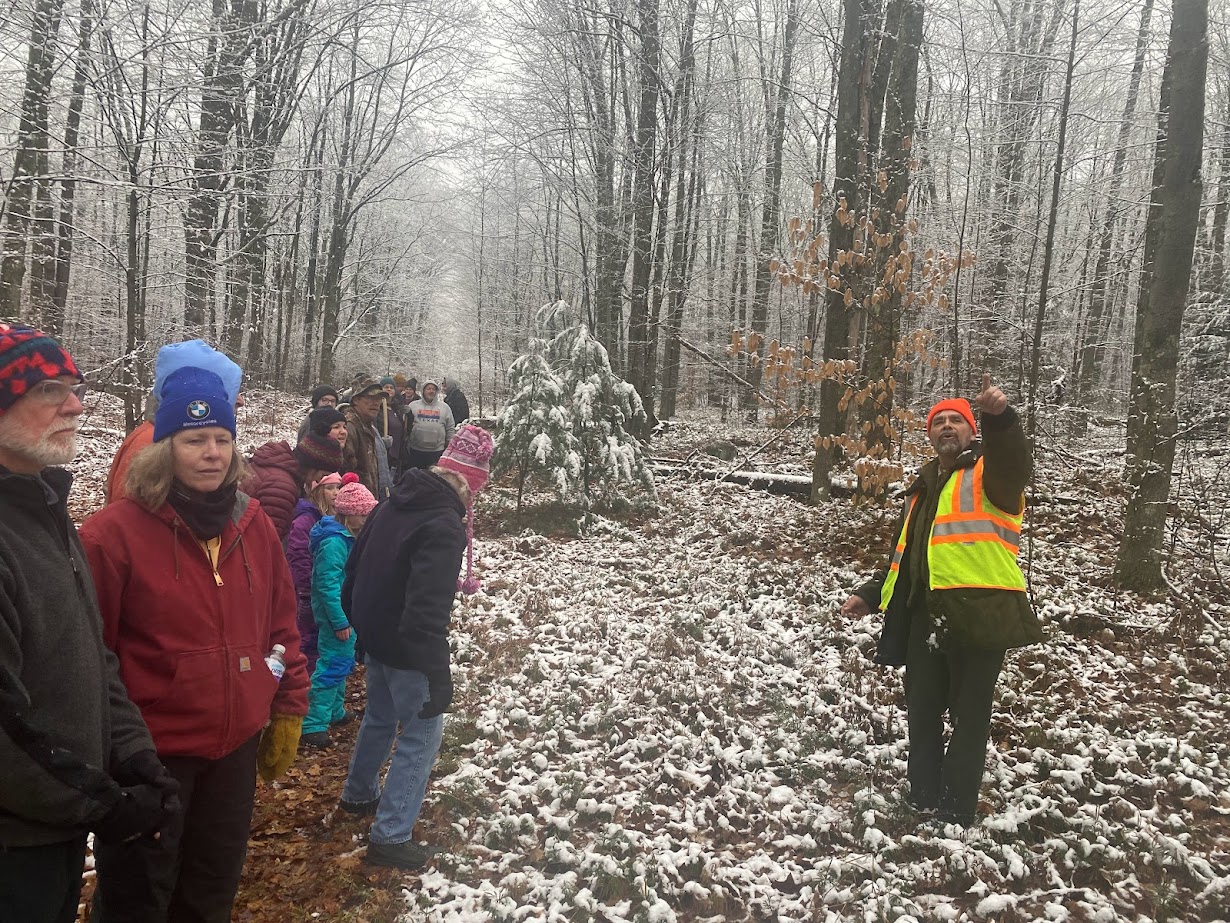
We stopped a little while later for Eric to point out the princess pine on the forest floor. It takes about seven years for princess pine to spread out and start producing spores. Although a lot of people like to make Christmas wreaths from princess pine, Eric was quick to note that it’s illegal to harvest princess pine on state park land. He also shared a tidbit of trivia about the princess pine spores: back when pills were handmade and were usually sticky on the outside, pharmacists would roll the pills in princess pine spores so they wouldn’t stick together in a container. The spores could also be used as a kind of flash powder for old-timey cameras.
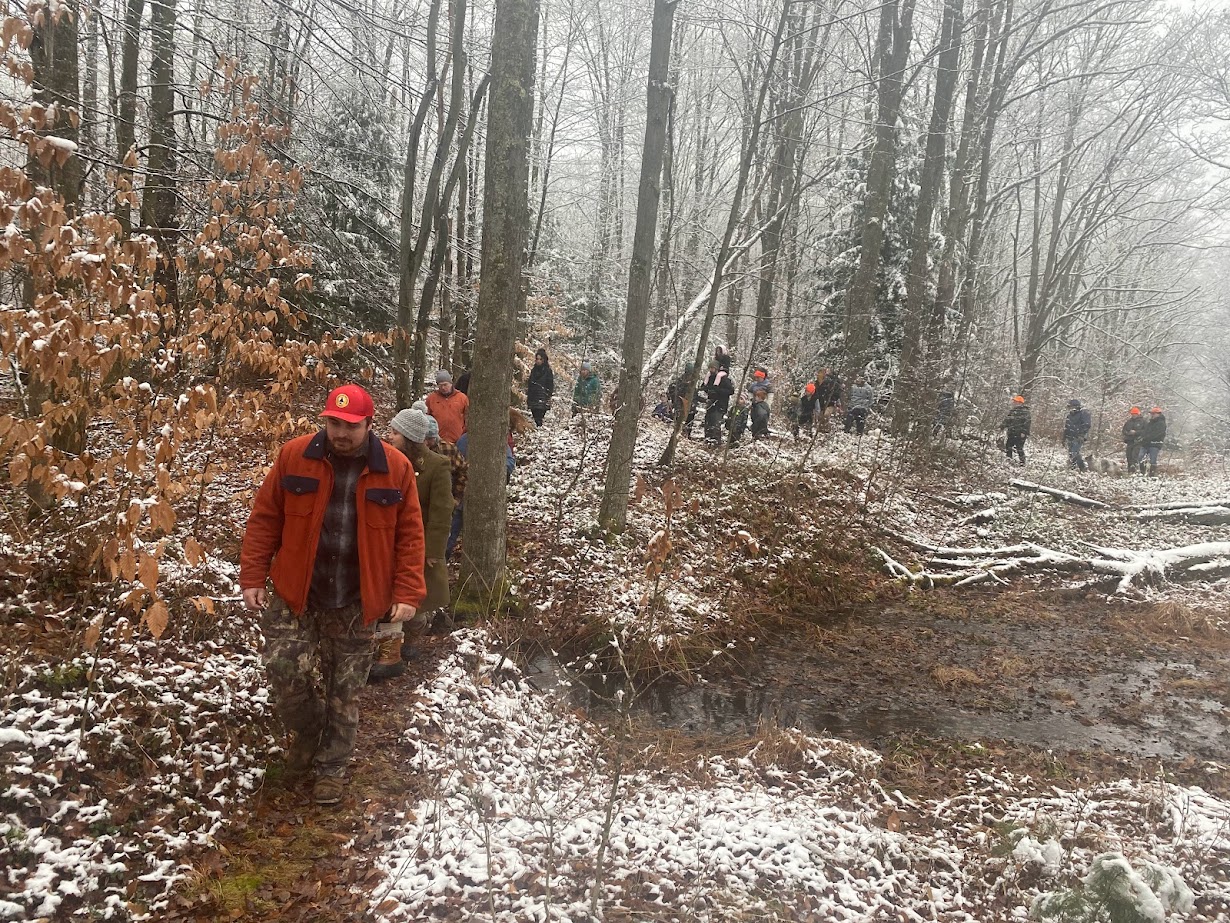
As we got farther along the .9-mile-long Stumpfield Trail, it became muddier. There were a number of wet patches and narrow streams of water that we needed to step over.
In one particular stream crossing, we needed to step onto a couple of downed branches to avoid getting our feet wet. It was a little slippery and some participants got a bit muddy.
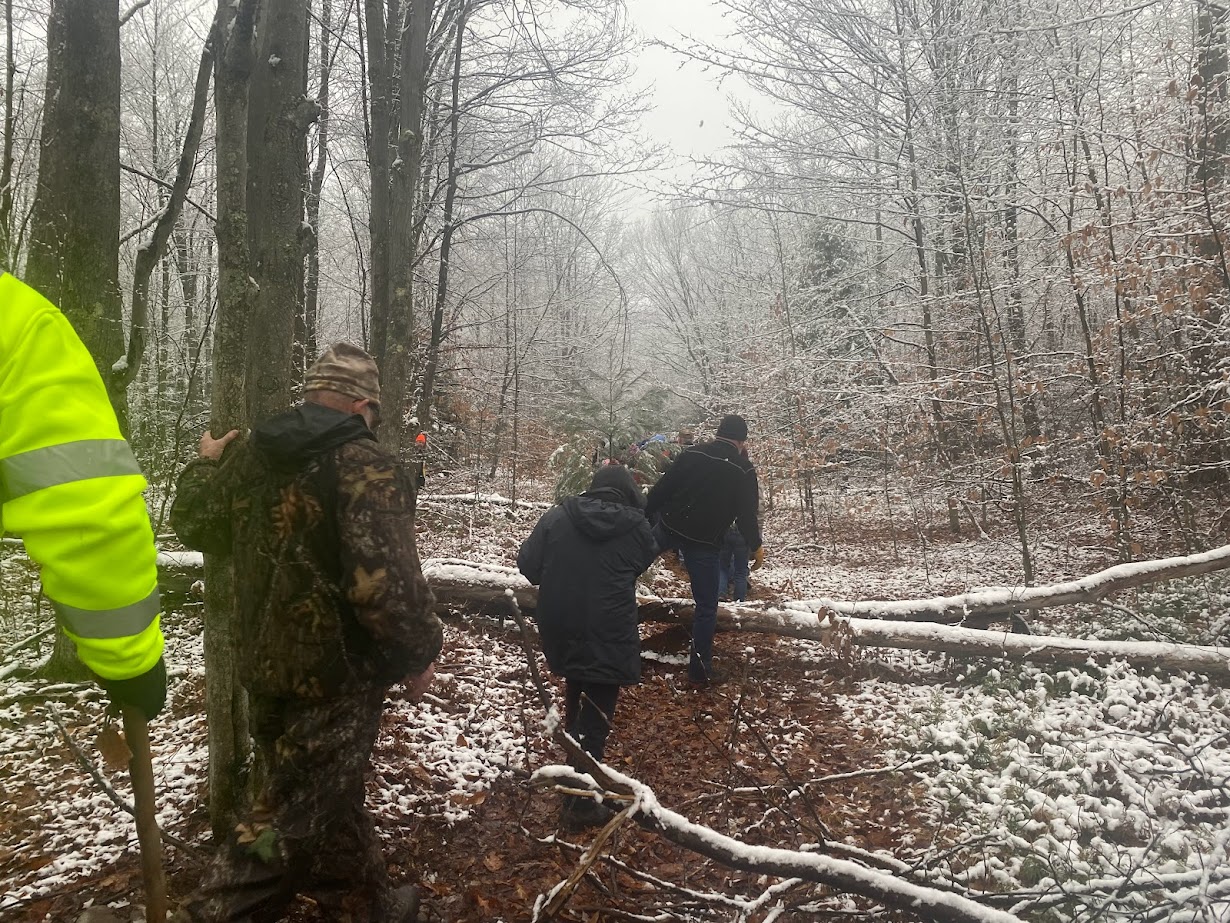
This was, ironically, my favorite part of the hike because it became clear how special these kinds of group hikes could be. Although most of us arrived as strangers, we grew closer together even on the short hike. There were hundreds of moments of small kindnesses: strangers (or maybe now newfound friends) offering a hand to cross over the water, pointing out a safe spot to step, holding back an errant branch so no one snagged their coat.
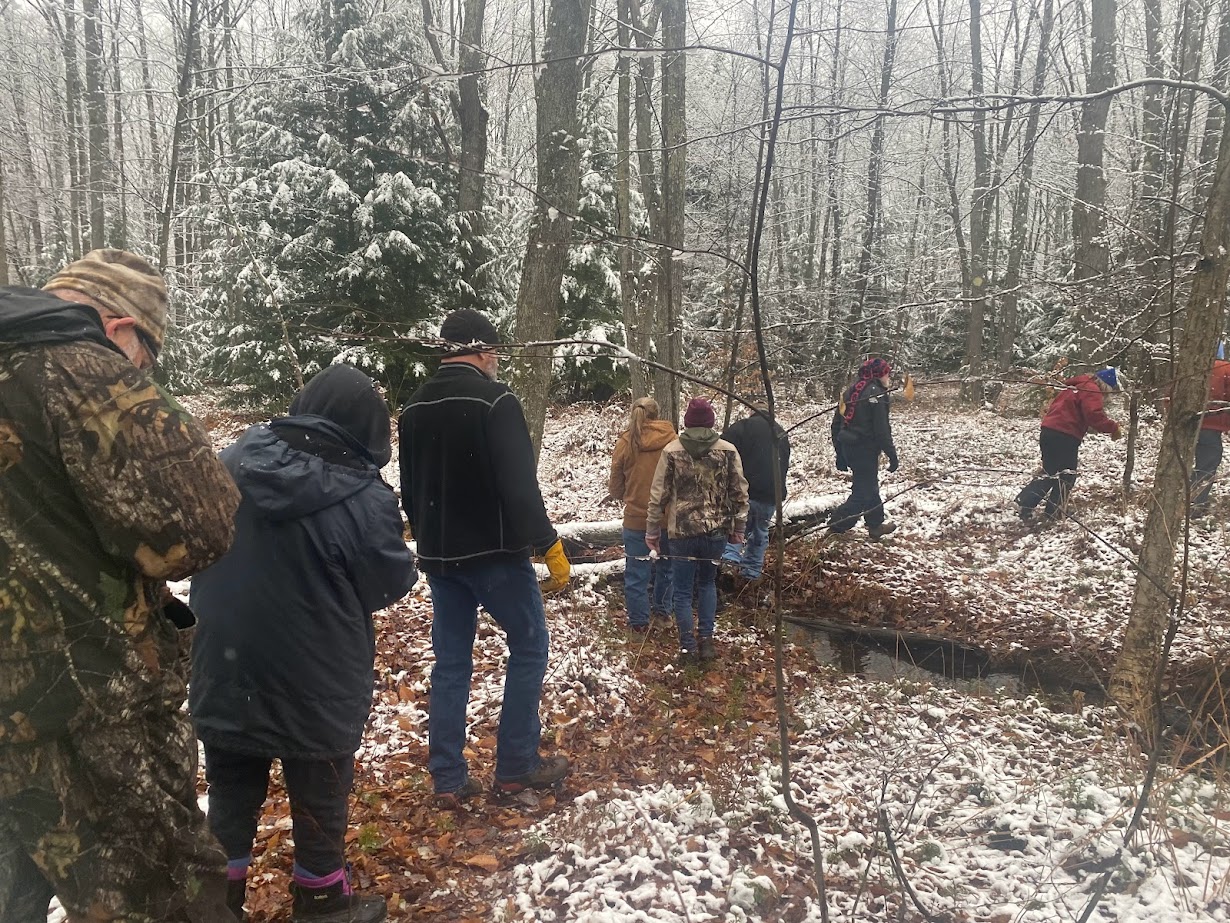
It was around this time that I spotted a familiar face, Ray Hunt, a writer and regular content contributor for the PA Wilds Are Calling blog. We hadn’t seen each other in the crowd earlier, but we concluded the trail-end of the hike together. I introduced Ray to Karen and Carl, who became fast friends while chatting about hiking and fishing, the Brockway Fourth of July, and the Hazen Flea Market.
Near the end of the hike, our group stopped to admire the amphitheater. Programs are held frequently here, especially when the weather is nice. Campers or day visitors can learn more about the park during interpretive programs, with a wide range of topics like fire building or bird identification. Eric was proud to announce that the electricity at the amphitheater was completely run using solar power, something that not only makes them a little more eco-friendly but also saves the park money in the long run.
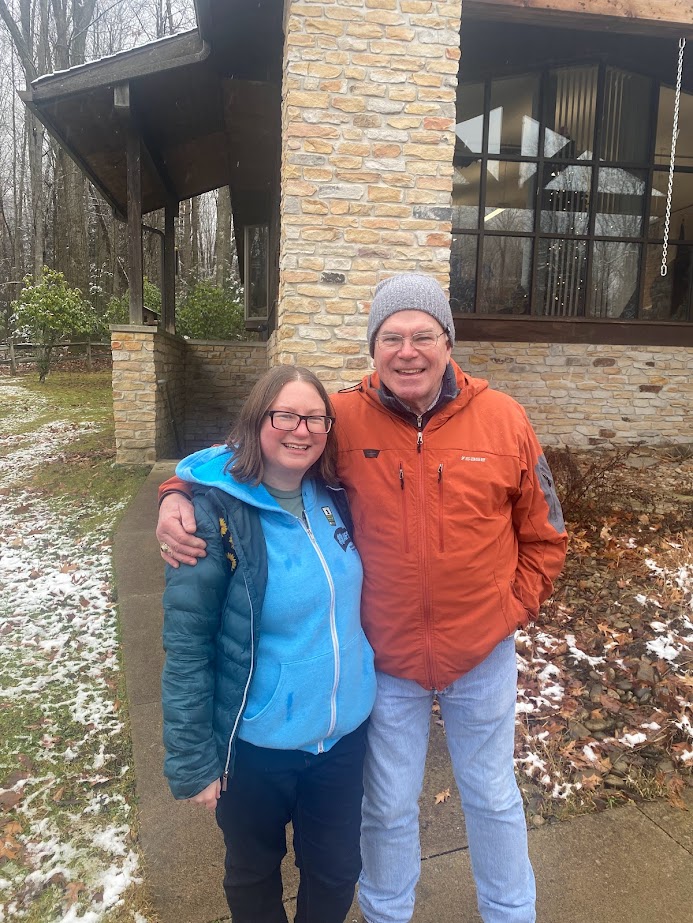
As we headed back to the park office, the chair of the Friends of Parker Dam club, Justin Carns, invited everyone back to warm up in the office classroom with some coffee and donuts.
Eric and Justin explained how, although it’s definitely appreciated when you donate to the state park system as a whole, you can also donate directly to a friends group for a specific park or find volunteer opportunities such as clean-ups or firewood cutting.

Although I love the hikes I take alone or with my family, a guided hike is something special. I ended up learning so many unexpected new things, and the background information made me love and appreciate the park even more. It was also nice to connect with other people who also feel so passionately about outdoor recreation, including both existing and newfound friends.
The First Day Hikes for 2024 are over for this year, but there are plenty of other guided hikes and interpretive programs at Pennsylvania state parks and forests across the PA Wilds and beyond!
Most of the events are free, and you won’t regret attending and making some fun memories outdoors. Check out the PA DCNR calendar of events for more information.
